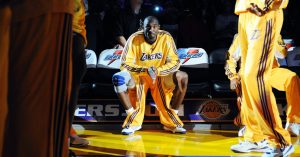Consultation P&T, consultation, engagement, property development, planning permission, council permission, planning law, planning application, public consultation, public engagement
Ah, the Super Bowl, a bonanza of overeating and watching men brutalize each other (brain health be damned), punctuated by 30-second reminders to spend money. This weekend the spectacle will play out at Hard Rock Stadium, a lovely open-air structure mere miles from Miami Beach, which is disappearing into the sea.
But I’m being negative. Here’s the good news: This time of year is (literally) the cosmically ideal moment for men to brutalize each other in a stadium in Miami. Right now, Miami is smack dab in between the seasonal events that ravage its shores: king tides. Peaking around October, the gravitational interaction between the sun, the moon, and our planet pulls on the oceans, resulting in extra-high tides that rush through Miami, flooding buildings and closing streets. But those tides only run through November, returning to a lesser degree in March. Thus the Super Bowl is perfectly timed, because it means that all those football fans don’t need to worry about king tides flooding their hotels.
King tides are normal—our celestial bodies have been doing their gravitational dance for a long while—but what’s not normal is human-induced climate change. And that takes us back to the bad news: In the longer term, this change is assaulting Miami from all sides, with increased rainfall from above, and rising seas pushing in from the east, raising the water table below. It is a city in the early stages of an existential crisis, and whether it can host Super Bowls in the future is the least of its worries.
Melting glaciers thousands of miles away have led to a sea level rise of 5 inches in the last 25 years in South Florida, with many more inches to come. At the same time, the warmer atmosphere holds more moisture, resulting in more rainfall. Just add a hurricane to the mix (the hurricane season starts in early summer and lasts through the autumn) and you’ve got not just a perfect storm, but a potentially catastrophic one.
“You can have an extreme high tide associated with king tide,” says University of Miami climate scientist Ben Kirtman, “plus sea level, plus a hurricane, plus excessive rainfall. So you have this compounding flood risk.”
It’s a risk that Miami is trying desperately to mitigate. It’s already got a flood control system in place, a series of canals that ferry rainwater to the sea. But these were built in the middle of the last century, and didn’t take sea level rise into account. They work on a gravity system; the water builds behind gates before being released into the ocean. That system is useless when sea levels go up. “When there are king tides, or even when there’s an offshore storm or wind event, the ocean water level can be higher than the canal level. So they cannot open that gate because the salt water will come into the interior,” says Jayantha Obeysekera, a hydrologist and civil engineer at Florida International University.
Hard Rock Stadium has a problem: It sits right smack on canal C-9, which Obeysekera says has been flagged as particularly vulnerable to this issue. (A request for comment sent to Hard Rock Stadium reps was not immediately returned.) Not that it’ll be a problem this Super Bowl weekend, but Hard Rock Stadium doesn’t exist only for the Super Bowl—it’s rockin’ year-round with concerts, too. And as the Miami Herald points out, a city under siege isn’t exactly attractive to tourists, or to an NFL considering it for future Super Bowls.
Sea levels are going nowhere but up, and fast: By the middle part of the century, we could see two to four feet of sea level rise in Florida, according to coastal scientist Harold Wanless of the University of Miami. And within 50 years, it could rise by three to six feet, or maybe more.
As



